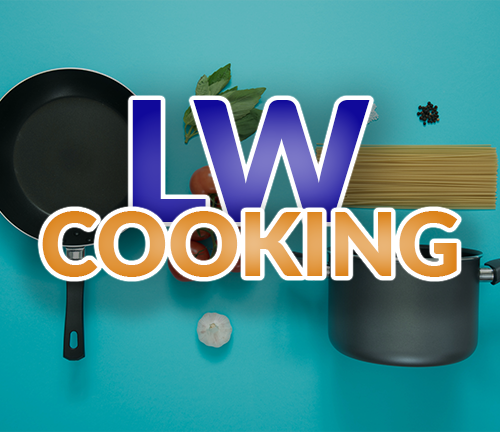Besides not being aesthetically pleasing, what’s the downside of strictly using countertop induction cooktops, both commercial and household varieties, as my burners? If I go for the individual cooktops, I could easily replace them individually if they break or if technology or features improve, plus I can put them away for when I need more countertop space. I do use my current built in cooktop as “counter space” during gatherings, but I’m always leery of doing this for safety reasons.
Edit: There’s a wonderful community being built here. Thank you all for you responses and for the great thinking points. While I’m not entirely sure of which direction I’ll go as far as countertop vs built-in, I’m definitely sure I’ll be using induction.
I’m totally not going to talk you out of it because this is what I would love to do. The apartment I live in has a tiny kitchen with hardly any counter space. If I could rip out the stove, replace it with a counter top, and use individual burners I’d be happy. I can’t so I won’t, but if I could I would. I’d only need two because I hardly ever use all four burners at once.
Usually a cooktop is paired with ventilation like a range hood. If you go with countertop units, would you still have a hood?
Great question. I do have a hood.
Depending on what kind of outlet you’re talking about and what country you’re in you may be limited in the power it will have. In the US at 110 V and maybe being able to pull 15 A (based on fuse for that circuit) you could only get 1650 W. A regular cook top or range is hard wired, has a much bigger fuse on they circuit usually 30 to 40 A and gets two phases so has 220 V which allows for much higher power output. My range’s big induction burner has 3600 W for example so it’s quite the difference.
I feel like kitchens might have 20A circuits. Regardless, I think the individual outlets are only rated 15A for the most part and I’ve never seen kitchen appliances use the 20A plug.
I’d install one 30A circuit, and one or two 20A circuit, each circuit with a single outlet.
If your house is older, you may not be able to support multiple induction burners outright as your wiring from the power company may be insufficient. You can check by looking for a main circuit breaker in your panel. If it is only 100A, you probably cannot support induction ranges. You would have to request new wiring from your power company, then also rewire a significant amount of your in home electrical. You can still buy the desktop singular ones though.
I use a double burner induction cooktop in my tiny kitchen because the gas range that came with this apartment is a crappy quality, inaccurate POS. I’ve been using the induction cooktop every day for about two years now, I usually leave it out too, since it’s a really nice glass surface. I just don’t give it power unless I’m actively using it. My cooking has vastly improved since I switched over to this thing. I wish I could toss the gas range. As for aesthetics, I honestly think it looks pretty cool on my counter.
- There is a minor safety issue, as portable units are - by definition - easily movable and can be jostled, tipped, etc. A range isn’t going anywhere.
- On a range you will typically have four burners, two front and two rear, with controls for all four on a common panel which is easily accessible at the edge of the counter. Each portable induction plate will have its own control.
- As others have pointed out, a combined cooktop (in the US) will generally have a dedicated 30-50A / 240V circuit supplying power to the group of heating elements. Unless you have asked for multiple circuits when you built your house, there will often be a single 15A/120v (or, in the last 20 years 20A/120V) circuit supplying all of the receptacles in your kitchen. If your house is older than ~1975 or 1980, the refrigerator may be on the same breaker as the receptacles. Even with a 20A/240, it means you’d be sharing the circuit with a countertop microwave oven, stand mixer, toaster, coffee machine, sous vide, etc, and possibly even the overhead lights and lights/receptacles in adjacent rooms.
I made the note about special circuits because when I had the kitchen in my 1960s house redone, I had 4 separate 20A circuits run, plus the fridge, plus the lighting circuit both separate. Two pairs of the outlets are actually on adjacent breakers so that, if I were crazy enough to do it, I could get a 240V/20A service with a custom (and definitely not UL rated) dual plug. I’ve never done that and, though it would be possible, it’s a terrible idea because it’s not a common breaker but two individuals and they should really be able to trip with a single breaker if used that way.
I’d install one 30A circuit, and one or two 20A circuit, each circuit with a single outlet.
I got two of the cheap single hob ones from ikea. I have been using them for a while and the function just fine. Having two seperate ones also means that I can just put either one away if it’s not needed.
Removed by mod
So did you have gas at some point before? Due to some moves over the last year and a half I’ve been able to use resistive, induction, and gas in a relatively close time span. I’ve found both quality gas and induction cook tops are fantastic and I could happily live with either. I did have some annoyances with gas (smell, maintenance, risk with small children), nothing that couldn’t be worked around but given the performance equity with induction I find myself preferring it instead of gas. Curious what drove you the other direction.
Could you provide some clarity, please?
How much room do you have available on your countertop? That could be an issue.
If you gas stove doesn’t have a hood, or it just has a hood that recirculatis, then I could see the benefits.
Fuck it, you know your space better than I do. Staple them to the wall and get some weird vertical thing going hell if it works for you.
Stop using fossil fuels to cook. Go for induction. Yes, you may need to get new pots and pans. It will be worth it in the end. I cannot wait to move to my own place so I can get away from this gas burning relic in my kitchen
Either way I’m using induction, built in or countertop.
Thermodynamics question: do you think it is more or less efficient to burn coal or natural gas, use that heat to boil water to turn a turbine, generate enough of a surplus to avoid brownouts and blackouts, transmit that power over long distance, radiating energy the entire way and losing more at every transformer power station eventually using energy to boil a pot of water…
Or to burn gas to boil a pot of water directly.
I own stock of energy producers and transporters in my 401k, so I’m extremely glad those in power get this question wrong. But I also know that wrongness has a cost.
And before you say “solar” please realize capacity does not equal production. Germany is on the forefront of renewable energy, and generates 10.4% of power from solar compared to 20.1% from lignite, the dirtiest possible coal. Hard coal, natural gas and lignite add up to 11.3 + 13.3 + 20.1 = 44.6%. United states has solar at 3.93% of our energy mix, with 37.82% generated from natural gas.
A substantial proportion of the heat from burning gas on a stovetop in the usual manner does not heat the content of the pot, so the difference in thermal efficiency between electric and direct gas heating may not be as large as you might expect. This factor could probably be improved with different stove designs though (cheap burners do a worse job of putting the heat where it does the most work).
Additionally, gas ranges impact indoor air quality a lot more than electric stovetops, and gas delivery to homes leaks into the atmosphere a fair amount of gas with high greenhouse potential (I work for a gas pipeline company on leak tracking software) so there are other tradeoffs that one should consider beyond just thermal efficiency.
I don’t think there’s a one-size-fits-all answer here, both are good options for different situations.
Energy efficiency is only part of the equation. Combustion inside the home also worsens air quality and has the small risk of gas leaks.
It is also possible to reduce the carbon footprint of an electric range (either coils or induction) by changing the energy mix feeding it. It is not possible to due that with a gas range.
https://www.youtube.com/channel/UCy0tKL1T7wFoYcxCe0xjN6Q. Technology Connections has good videos on induction and gas range efficiency and emissions.
No one is cooking enough for their fossil fuel emissions to affect the world in any way. Throwing something out and buying everything new has a cost as well. Plus for cooking, it’s hard to beat a cast iron pan.
?
Cast iron works great on induction. Arguably works better than on gas. Faster and more even.
Also home defense. That fucker hurts when you throw it.






